By Glenn Barnett
On October 20, 1941, the Australian destroyer Vendetta weighed anchor in the port of Alexandria, Egypt. After spending nearly two years supporting the Royal Navy in the fight for control of the Mediterranean Sea, the aging engines of the busy warship could no longer give her the speed needed to escort convoys, screen the fleet, or dodge dive- bombers. It was time for a major overhaul.
Launched in Govan, Scotland, on November 25, 1916, Vendetta was a Royal Navy V-class destroyer, 300 feet long with a beam of 26 feet, nine inches, and a top speed of 34 knots. Her original armament consisted of four-inch main batteries, 40mm antiaircraft guns, and four torpedo tubes. Later refits increased the vessel’s antiaircraft capabilities and reduced the number of torpedo tubes.
An Experienced Vessel
Vendetta was no stranger to combat. She was originally commissioned in Great Britain’s Royal Navy in October 1917, in time to take part in World War I. She saw action at the Battle of Heligoland Bight, performed fleet escort duties in the North Sea, and was on hand to witness the surrender of the German High Seas fleet. After the Great War, she was stationed in the Baltic where her crew rescued 430 survivors from the light cruiser HMS Cassandra when that ship sank after striking a mine left over from the war.
Vendetta then gave support to White Russian forces against the growing menace of the Communists. She engaged two Bolshevik destroyers in battle. One, the Spartak, was run aground, while the other, the Lennuk, was captured and later turned over to the new Estonian Navy.
From 1924 until 1933, HMS Vendetta cruised in the Mediterranean and Red Seas where she carried out patrol and escort duties, foreshadowing her future role. In 1933, Vendetta and four other Great War era V- and W-class destroyers were turned over to the Royal Australian Navy (RAN). As part of the RAN, the newly transferred HMAS Vendetta performed ceremonial and patrol duties until 1939.
Losing Mediterranean Ports
On the eve of World War II, it looked as if Great Britain would need all the help it could get to stave off the growing Nazi menace. Vendetta and four of her sister destroyers, Stuart, Vampire, Voyager, and Waterhen, were sent to the aid of the mother country in her hour of need. Vendetta and the RAN destroyer squadron arrived in the Mediterranean late in 1939.
German propaganda minister Joseph Goebbels called the aging boats “scrap iron” and nothing more than a “consignment of junk,” because they all dated from World War I. They were immediately and affectionately dubbed “the scrap iron flotilla.”
It was not just their age but also their size that drew derision. Laid down at just over 1,300 tons, the V and W classes were dwarfed by newer British designs that ranged upward of 1,600 tons. American, German, Italian, and Japanese designs called for destroyers of up to 2,000 tons. Still, Vendetta and her sisters could pack a punch.
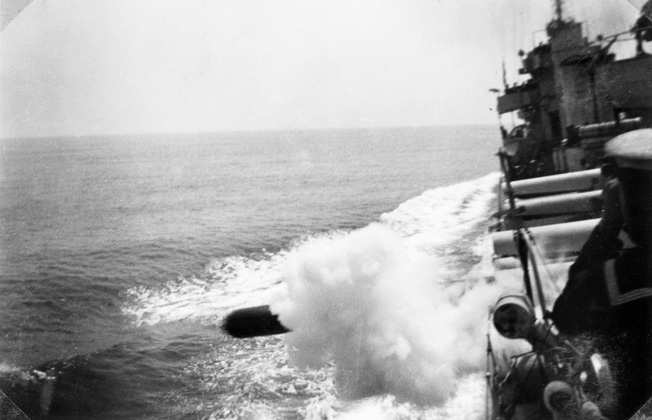
At first there was little to do in the Mediterranean as the combined British and French fleets were supreme. Vendetta conducted routine patrols and escort duty from one end of the sea to the other. Everything changed when Germany invaded France. Excited by the prospect of a Nazi victory and not wanting to be left out, Mussolini’s Italy entered the war in June 1940. France surrendered in the same month.
The strategic situation changed overnight. The Royal Navy had once been welcome at any port in the Mediterranean. Within a month, it was barred everywhere save Egypt, Palestine, Cyprus, Malta, and Gibraltar.
A Sidelined Warship in the Mediterranean
The scrap iron flotilla was well used in the war’s early days in every role that a destroyer was designed for and every task that the Admiralty could think of. It was a difficult time for the little Australian destroyer. She was undergoing a much needed retrofit at Malta when Italian and German bombers began their offensive against the helpless little island. She was under repair from June 11 until July 8, 1940, and during that time her log recorded 80 bombing raids against the island. Fortunately, the Italians did not press their advantage.
Vendetta was not damaged, but her enforced stay at Malta caused her to miss the Battle of Calabria in which a combined British and Australian fleet engaged an Italian squadron with mixed results. Following her repairs, Vendetta continued her ceaseless round of escort duties.
Engine trouble in October caused her to miss another battle. Back in action in November, the renewed ship supported British actions in Greece and Libya. These were soon complicated by the introduction of Luftwaffe dive- bombers and torpedo planes to the Mediterranean conflict. Several ships of the Royal Navy were sunk or damaged.
By March 1941, German forces were pushing through the Balkans. Already stretched to the limit, Great Britain determined to bolster Greece’s defenses. Vendetta began new duties escorting troops and supplies to mainland Greece. On March 28, Vendetta was steaming with a British battle fleet south of Crete when enemy ships were sighted. The Allied ships put on all speed to close with the Italian fleet in what became know as the Battle of Cape Matapan. Poor Vendetta’s engines were overtaxed, and she could not keep pace with the fighting fleet. She was ordered to return to Alexandria, missing any participation in the resounding Allied victory to come.
Once again, Vendetta underwent repairs to her aging and cranky engines. By the time she was back on duty in April the situation in Greece had gone from bad to worse. The 56,000 Allied soldiers who had been landed there now had to be removed to prevent them from being overrun. Vendetta was called upon to aid in their evacuation. On April 25, she took aboard 350 British troops and safely evacuated them to Suda Bay on Crete.
The next month found Vendetta ferrying reinforcements to Tobruk and bringing out wounded. She was then involved in the efforts to ferry soldiers to Crete and to resupply them. The fortunes of war were still against the Allies, and again Vendetta was required to help with the extraction of those same soldiers once the Germans threatened to overwhelm them.
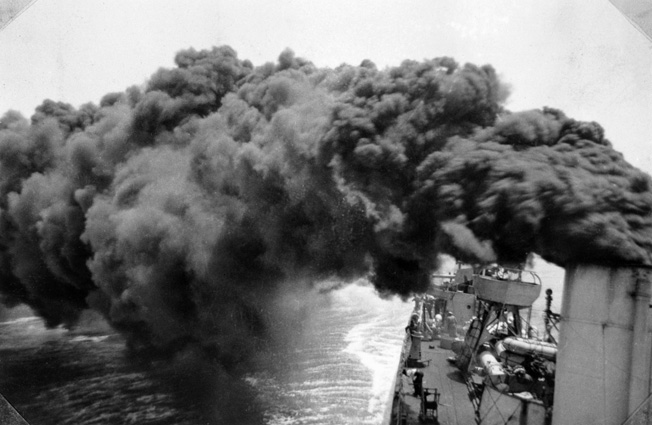
The Germans soon took the offensive in Africa and increased the pressure on the British at the port of Tobruk. Axis troops surrounded the town and lay siege to it for 242 days. London was adamant about holding on to Tobruk, but the sandy enclave on the Libyan coast could only be supplied by sea. Merchant ships were too slow and vulnerable. Fast destroyers were needed.
Vendetta and other ships were pressed into service ferrying men and supplies to the besieged port city. The supply runs had to be made at night to avoid the deadly accuracy of German guns and the prowling Luftwaffe. These urgent trips were known to the men as “spud runs” because of the supplies they carried. Vendetta made 19 “spud runs” to Tobruk. In all, she ferried in 4,263 troops and 616 tons of supplies while carrying out 220 prisoners. The nocturnal runs required her to steam at high speed to accomplish her tasks and be away before dawn.
The resulting wear on her engines was acutely felt. Vendetta had been at war constantly for two years since leaving Australia and the wear on her ancient engines and primitive steam system could no longer be ignored. It was time for her to undergo serious repairs that could only be accomplished at a major naval yard. In this case, she would have to steam to Singapore.
Joining the Pacific War
Leaving Egypt forever, Vendetta steamed slowly through the Red Sea and on to Singapore, gingerly favoring her engines. She arrived on November 12, 1941. Most of her war-weary crew were sent home to Australia for a much deserved and long overdue rest. Just 21 volunteer crew members stayed behind to supervise the overhaul of the ship’s engines and steam plant.
The boilers and propulsion system were completely dismantled, and the machinery was spread out on the adjoining dock. Her guns were also dismounted for rework. This was the state of things when the new battleship HMS Prince of Wales and the battlecruiser HMS Repulse steamed into the port on December 2, 1941. The two mighty warships had been sent from Europe to augment the forces that Great Britain could spare in the Far East to guard against Japanese expansion.
No sooner had the two capital ships arrived in Singapore than the Japanese began their assault in the Pacific Ocean from Pearl Harbor to Malaya. Within a week of their arrival at Singapore, both of the great ships were sunk.
When the war in the Pacific began, Vendetta was a dead ship. Immobile at her dockside and disassembled into a thousand pieces, she was helpless. Some of her engine parts were in a naval workshop 20 miles away. Her propeller shafts had been removed, leaving two gaping holes in her stern below the water line. These were temporarily plugged but vulnerable. Putting her pieces back together seemed hopeless as the Japanese moved ever closer to the city.
With no place to go, her commanding officer, Lieutenant W.G. Whitting, offered his services to the military authorities in Singapore. Despite her vulnerable position, the little destroyer would now take on her third enemy of the war.
Vendetta became the center of an antiaircraft hub at Keppel Harbor. Her already dismounted 12-pound guns were located dockside just astern of the lifeless hulk. They were positioned toward the flight path of incoming Japanese bombers. Machine-gun nests were established using the ship’s .303 Lewis and Vickers guns. Soon the docks bristled with firepower. Lieutenant Whitting established two watches day and night so that the guns were always manned and ready for action. Whitting assumed command of the day watch of the guns while his gunner, J. Lace, officered the Lewis machine guns.
By New Year’s Eve, the Japanese had advanced down the Malayan peninsula sufficiently that they were able to operate from abandoned Royal Air Force bases. On that day 54 bombers flew overhead. The bombing would continue until Singapore fell. Vendetta’s shore-side guns blazed away.
The Japanese kept coming. On January 21, the worst day of the bombing, 125 bombers participated in the carnage. Twenty-seven of those planes were assigned to bomb Keppel Harbor. They came in astern of Vendetta where one of her guns was waiting. A direct hit was scored on the bomb bay of an approaching bomber, rendering a terrific explosion, blowing the big plane out of the sky, and damaging her wing mates with fragments.
Through it all the skeleton crew tried to put its ship back together again, but it was slow going. It was monsoon season, and rain fell every afternoon. All repair work had to stop when the sirens sounded. The local laborers abandoned their work at the first alarm while the crew ran to battle stations.
Escape from Singapore
After a month of working and fighting it became clear that the ship could not be put back into working order. Facilities needed for Vendetta’s repair were busy with other work or being bombed.
Two days after the downing of the Japanese bomber, Lieutenant Whitting was ordered to get his ship ready to be towed out of the harbor. He began the effort to prepare his ship for towing. With the Japanese advancing rapidly southward along the Malayan peninsula, the city-state of Singapore was doomed.
It took a week of struggle to remount the ship’s guns and collect all of its equipment and stores. Machinery and parts of every description were unceremoniously stored on the mess deck to keep them sheltered from the elements. One enterprising crewman commandeered quantities of cigarettes and other stores “in the King’s name” from an agreeable quartermaster.
On February 2, 1942, Vendetta was taken under tow by the tug St. Just and pulled out of the harbor. The tow lines of that day consisted of steel cables at each end and a length of four-and-one-half-inch thick manila or hemp rope in the middle. The total tow line was about 3,250 feet long. The steel cables and the rope spring had spliced eyes, which were connected with huge shackles. The purpose of the spring was to stretch and contract with the movement of the ships in medium to heavy seas.
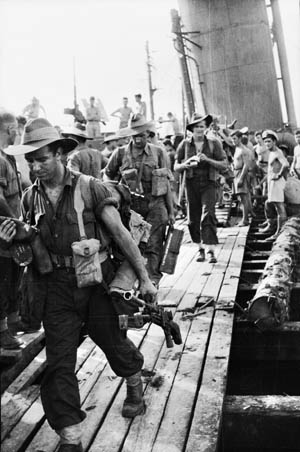
When the tug had towed its charge seven miles into the open sea, Vendetta was transferred to the custody of HMS Stronghold, another aging destroyer just two years younger than she was. They were just underway when Japanese bombers flew overhead and bombed the wharf where Vendetta had been moored only two hours earlier. The resulting smoke from the bomb hits helped to hide her from above. Her luck was holding.
Although not attacked by the Japanese that day, the slow-moving ships leaving the harbor were noted, and the following day bombers found them and attacked repeatedly. In her perilous state the immobile destroyer fired her guns constantly. Each four-inch shell had to be hand carried up from the darkened magazine below the waterline with only dimming flashlights to illuminate the crew’s steps.
One crewman estimated that 120 bombs were aimed at the destroyers and their little escort. No hits were scored, though near misses scattered shell splinters across the decks and the tow rope was straddled by one string of bombs.
Another destroyer, HMS Electra, was escorting the two slow-moving ships. Her gunnery officer T.J. Cain remembered one of the attackers: “He was a cautious type, or he believed in playing on our nerves for he followed us for at least an hour before attacking, and when he did decide to have a go, it was from a high level out of range of our gun.”
The following day the ships reached the temporary safety of Sumatra. There at the little port of Palembang, Vendetta was left by her consorts until February 8, when the sloop HMAS Yarra resumed her tow, this time to Batavia, Java, the capital of the Dutch East Indies. The crew of Vendetta knew the sailors on the Yarra. They had made the spud run to Tobruk together. Although rated as a sloop, the newer Yarra, at 1,060 standard tons, had nearly the same displacement as Vendetta. The immobile ship stayed in Batavia until February 17. She was then towed out of port by a most unlikely savior.
The HMS Ping Wo
HMAS Ping Wo was originally built in China as a river boat. She began life plying the waters around Shanghai. Fearing the growing power of the Japanese, her owners sailed her to Singapore. Once hostilities started there, the Ping Wo was pressed into service by the Royal Navy and then given to the Australians for this mission. Her crew was a mixture of Australians, English, and Chinese nationals.
The two ships left Java for the long trip to Australia at an average speed of three knots. It was a miserable time for those aboard Vendetta. Without her engines the ship could not produce electricity for refrigeration, lighting or air circulation. The destroyer glided slowly through the tropics in hot, humid weather. Hammocks were slung below decks where it was dark, warm, and clammy. On deck it was frying pan hot.
No hot or cold food was available, and mess consisted of what could be eaten out of tins. The crew passed the time playing cards, smoking the cigarettes liberated from stores in Singapore, sorting through and cleaning the hastily gathered ship’s parts and equipment, and standing watch by the guns.
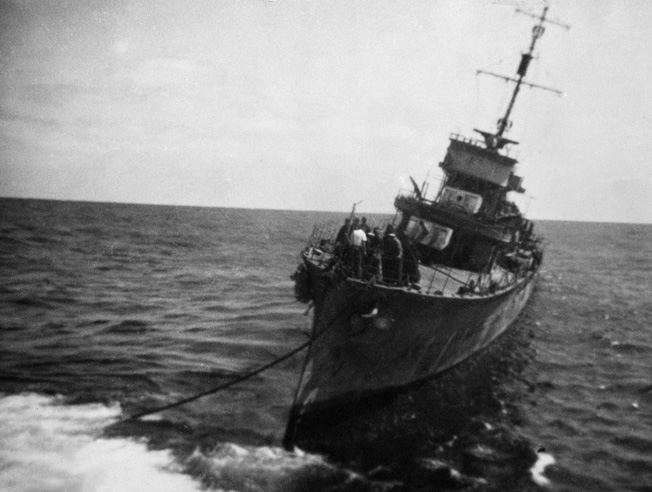
There was one small daily comfort. An old British tradition still applied in the Australian Navy. Each member of the crew was entitled to a tot of rum on any day or night that the ships were at anchor or not under way at sea. The shrewder crew members drank up the tots of their nondrinking mates as well.
HMAS Yarra continued as escort until February 24, when she was relieved by the light cruiser HMAS Adelaide. The Adelaide, like Vendetta, was another vessel that dated from the Great War. Adelaide was one of the very few warships left to Australia still in home waters. Most of Australia’s ships were supporting the Royal Navy against the Nazis in Europe and North Africa.
The Vendetta was being towed through dangerous waters. Tragically, Yarra, Stronghold, and Electra would all be lost in action against the Japanese in early March. All but 13 of Yarra’s 151-man crew would perish. If Vendetta had been discovered by wide-ranging Japanese cruiser squadrons, she, too, would have been a victim.
Breathing Life into the Dead Vendetta
Despite the deteriorating situation around them, the little flotilla steamed on at an agonizingly slow pace until Australian territory was finally reached on March 3. The crew rejoiced on landing at Fremantle near Perth. They were given a well-deserved six-day shore leave.
However, the long trip was not yet over. The closest repair facilities for the dismantled destroyer were in Melbourne, half a continent away. Vendetta would have to continue her lifeless cruise around the south of Australia through the vast Australian Bight (or Bay). This was an area of desolate and stormy seas, extreme tidal variations, and a craggy coastline that could doom a towed ship if her tow line were broken. There was immediate physical danger as well. If a line snapped, the steel ends could whip around and cut a man in half. If the line were stretched taut and heard to “sing,” sailors would run to get out of the way of an impending snap.
By now, the plucky little river boat Ping Wo had played out. She had engine problems of her own, and towing responsibilities were given over to the steamship SS Islander for the dangerous trip through the Bight. Lieutenant Whitting was relieved. He had no faith in the Ping Wo’s ability to tow him across the stormtossed coast of southern Australia. Even without Japanese bombs to worry them, the Bight was perhaps the worst part of the journey. Seas were rough, and the Vendetta could not negotiate the heavy swells. In a following sea, Vendetta might come up abreast of Islander separated by the length of the connecting rope. The tow rope parted twice, and the helpless hulk threatened to wash up on the sheer cliffs of the shoreline.
Through heroic efforts from both crews, tow lines were restored, and on April 15, Vendetta and Islander triumphantly entered Melbourne harbor. The epic 5,000-mile odyssey from Singapore to Melbourne had lasted 72 days. Of these, 40 days were spent at sea under tow. The tow line had parted five times, but Vendetta had made it. It was the longest ship tow in history. For his part in saving his ship, Lieutenant Whitting received the Distinguished Service Cross.
Vendetta would undergo a complete refit and begin a new life serving the Royal Australian Navy in the battle for New Guinea. After her refit she steamed another 120,000 miles in support of Allied operations. She was an active warrior until the end of hostilities. Of the five World War I-vintage destroyers that Australia contributed to the scrap iron flotilla in the Mediterranean, Vendetta would be the only one to survive the war. She last steamed under her own power in October 1945.
In 1948, she was scuttled outside Sydney harbor to begin new service as an artificial reef. Her mast was saved and today stands proudly at the RAN Heritage Centre at Garden Island in Sydney.
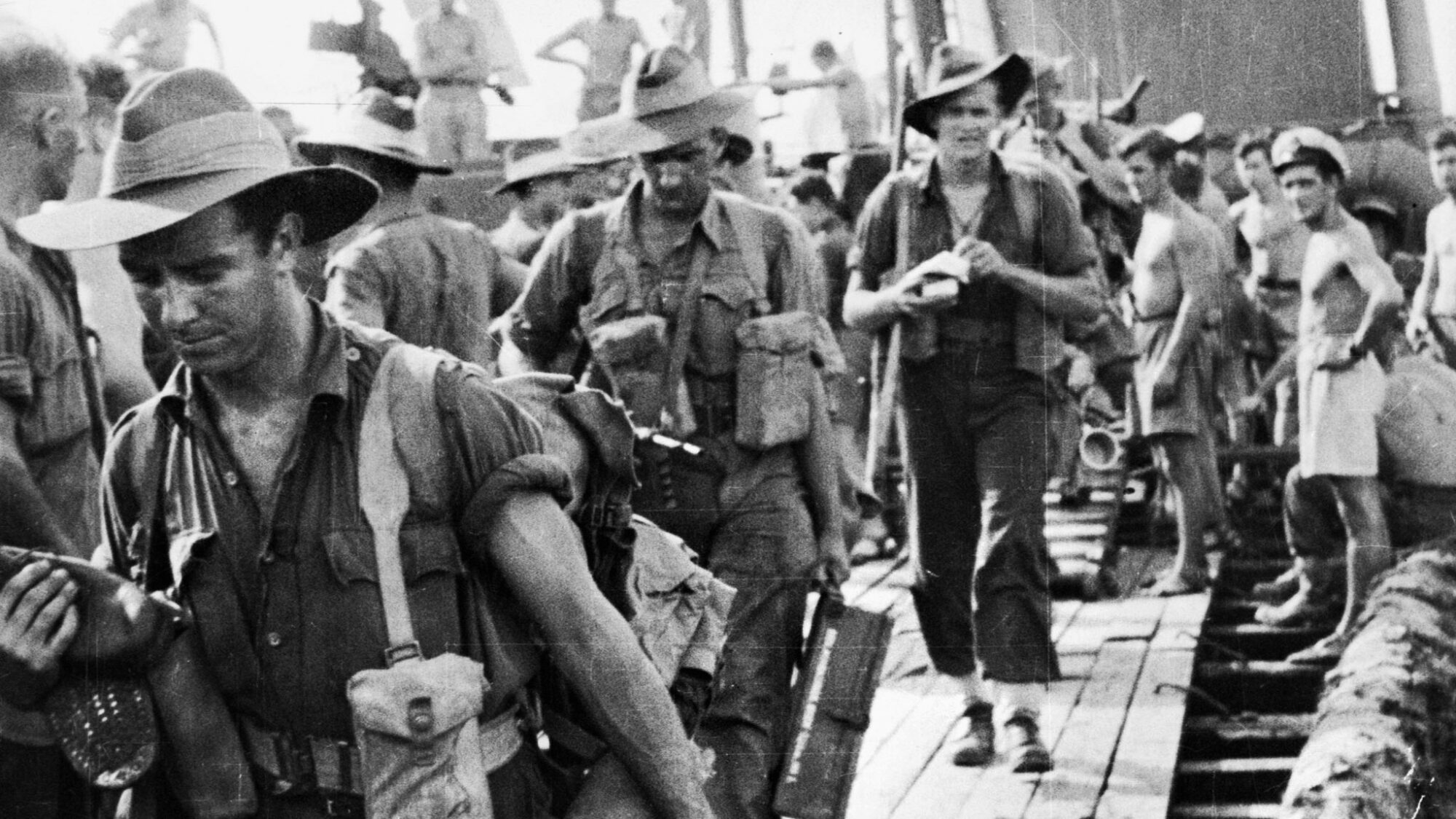

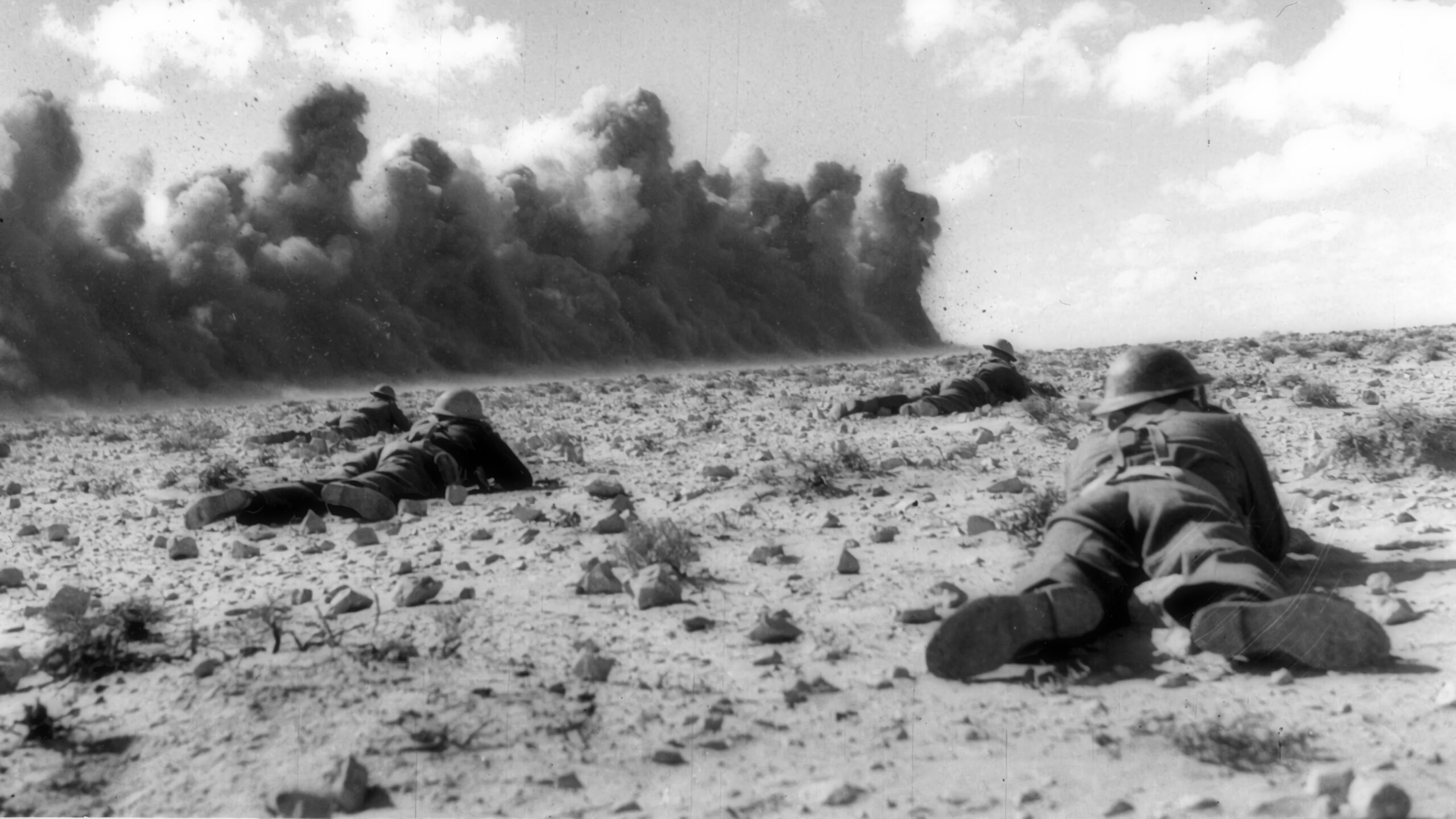
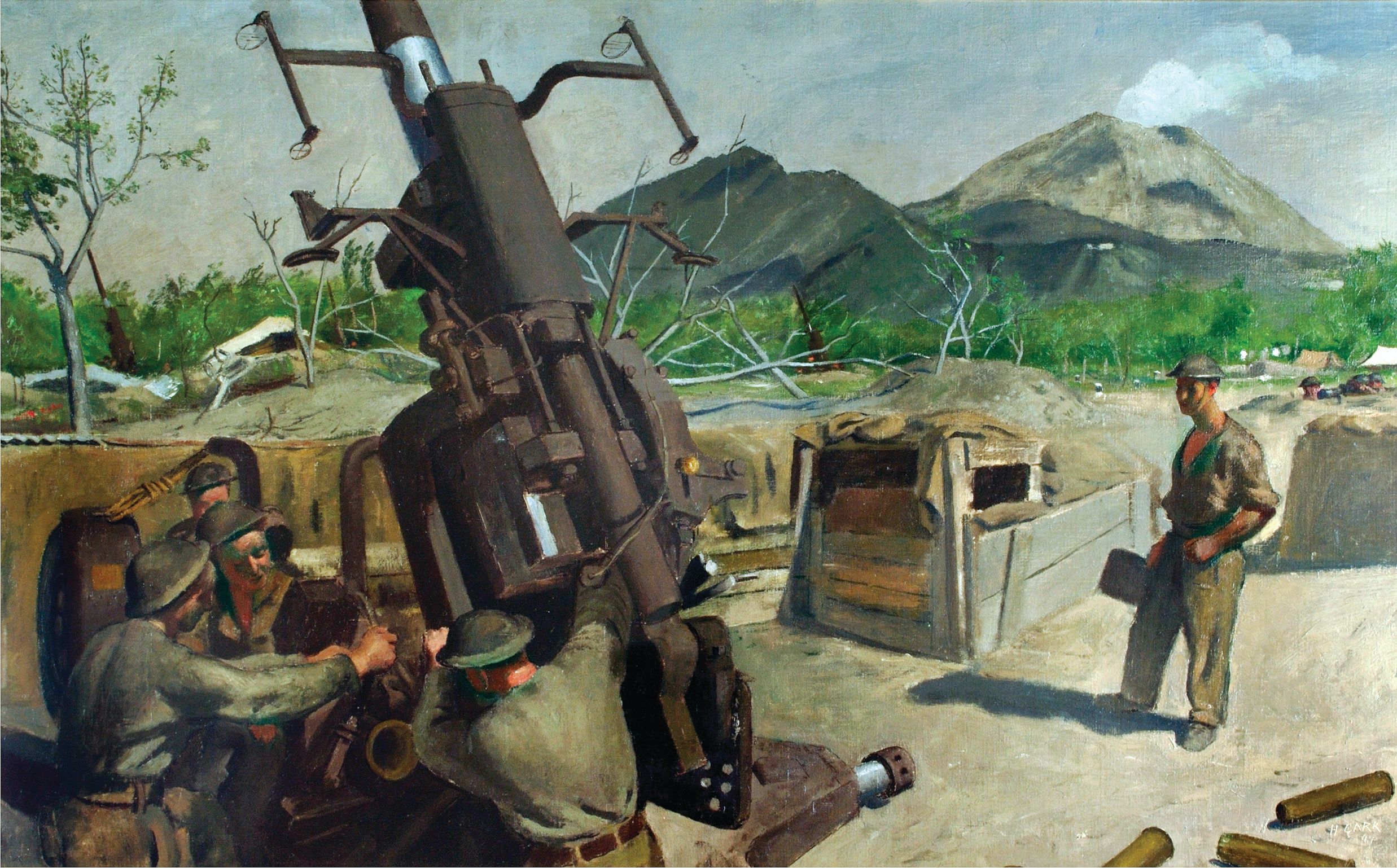
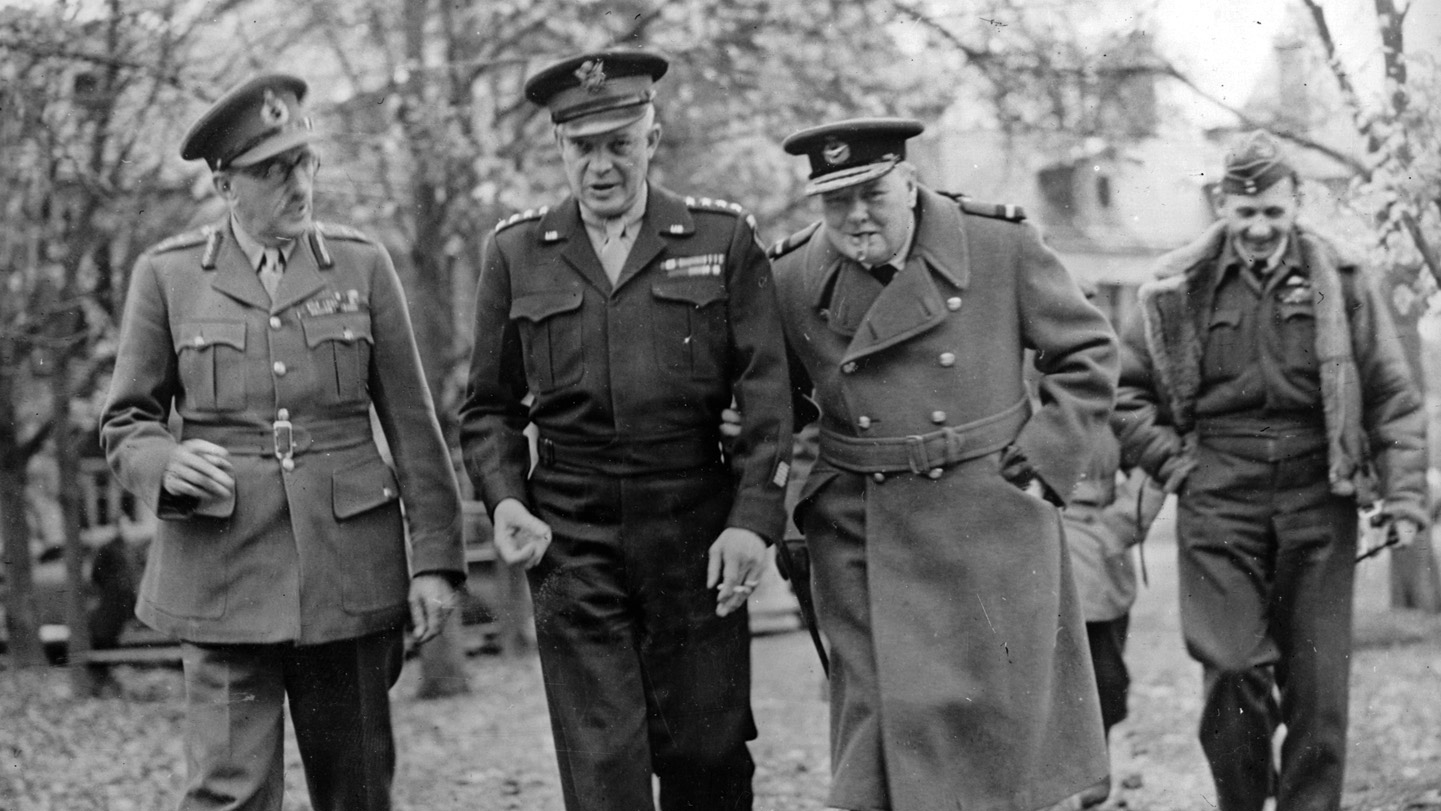
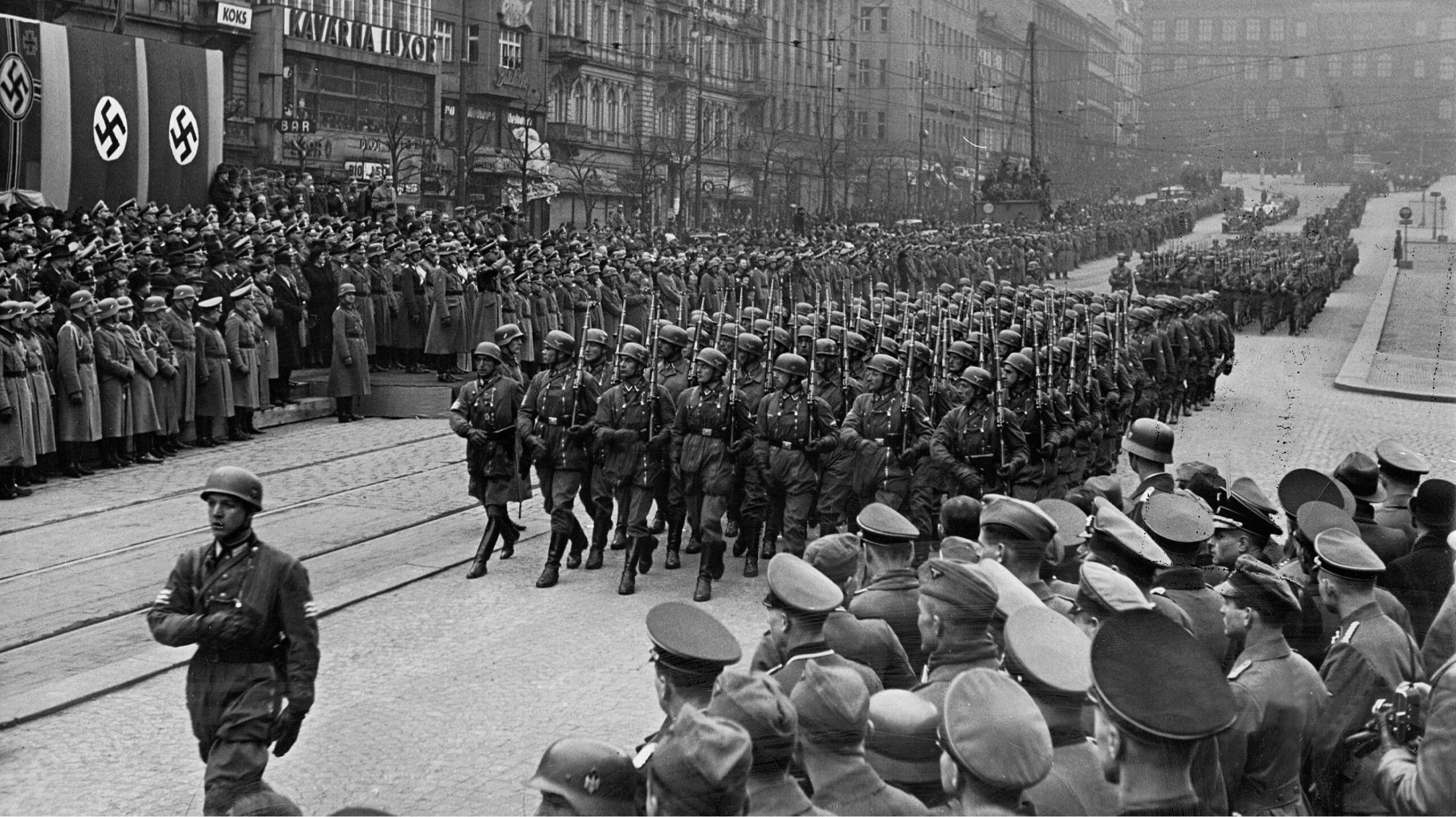
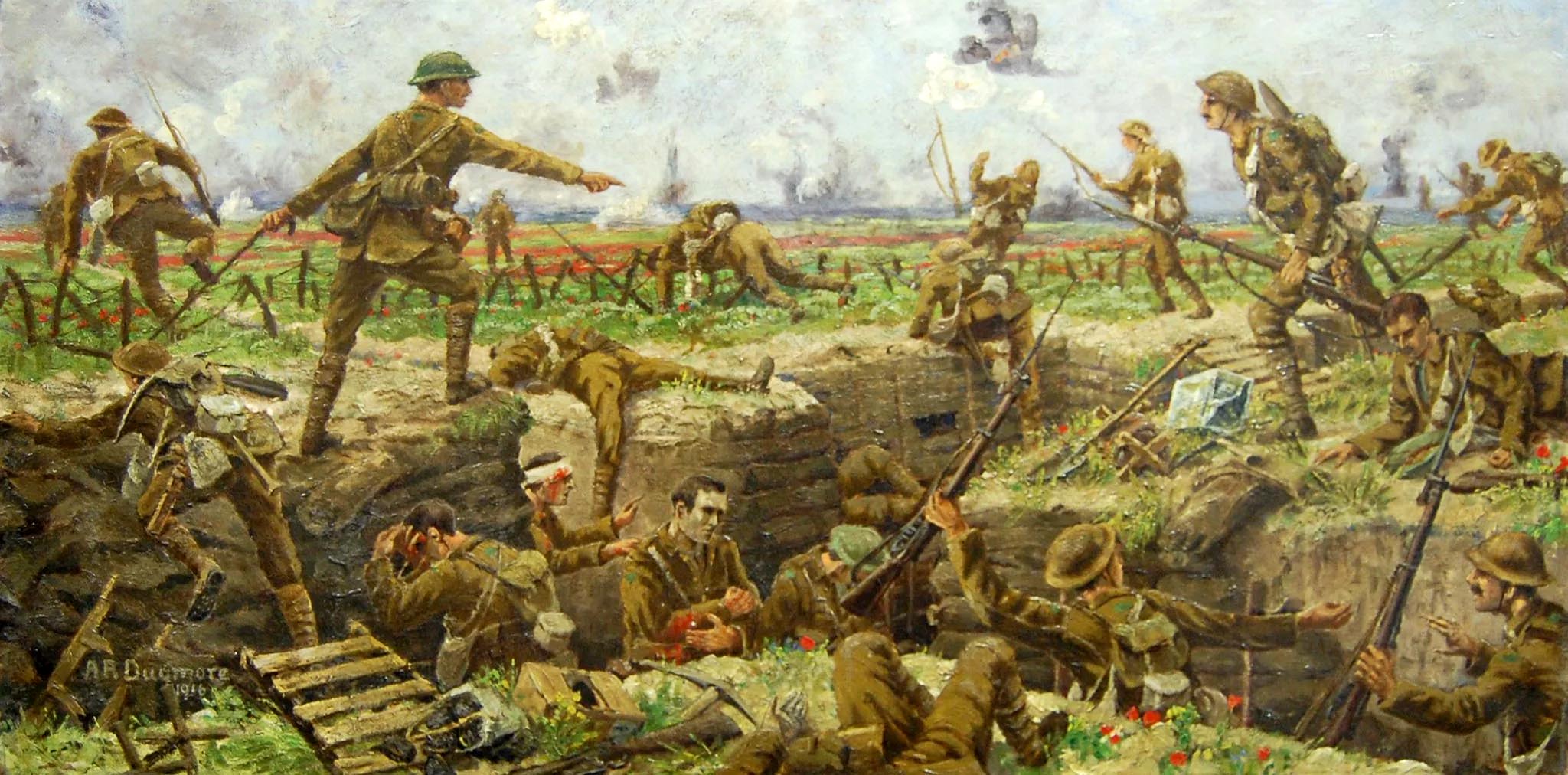
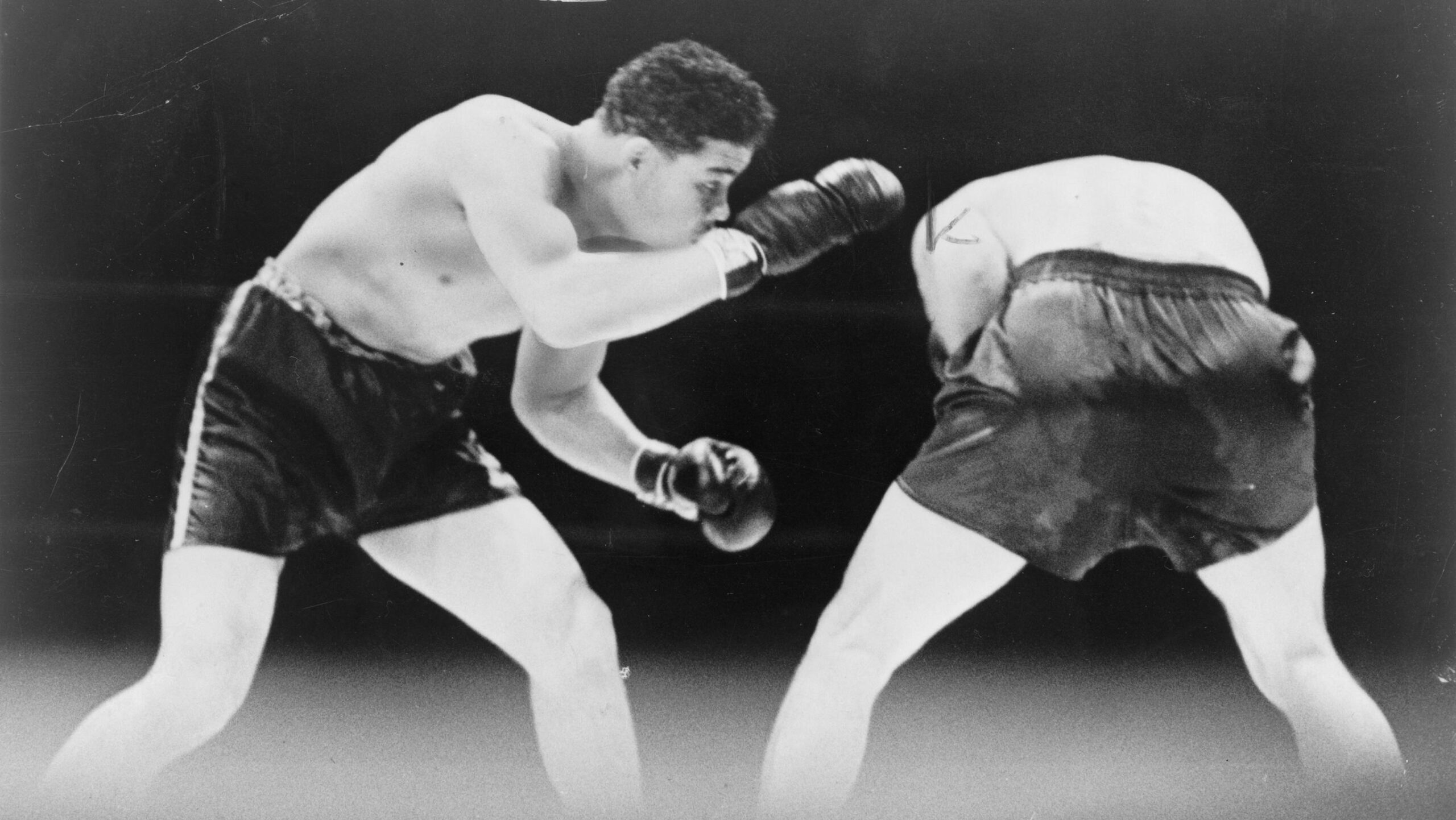
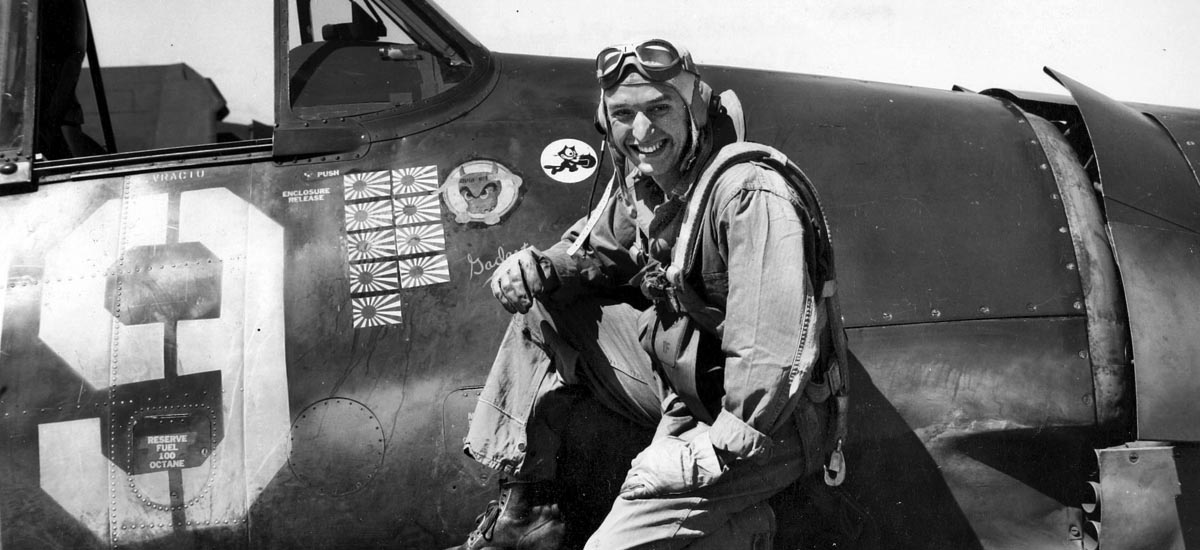

Join The Conversation
Comments
View All Comments